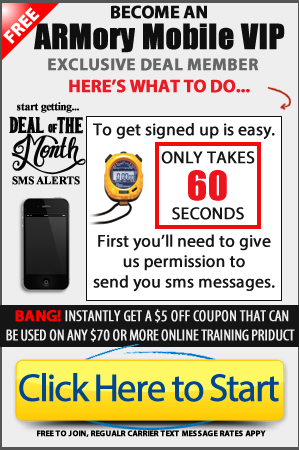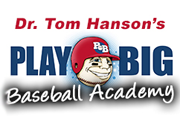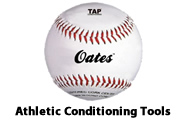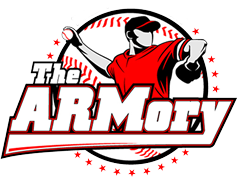Deceleration Can Be A Pain In The Rhomboids
I have a good friend (we’ll call him Tom) up in Carolina who has a 16 year old son named Hunter. Hunter is a pitcher–a darn good one–a sophomore starter on his high school varsity team. He throws in the mid 80s and has a nasty breaking ball and change up. Tom texted me last weekend and told me Hunter was super excited that the coach had chosen him to pitch on Monday against a rival team with 5 D1 commits.
I was most impressed with Hunter’s growth mindset (see Carol Dweck). Many guys would be scared to death. Hunter was excited.
On Sunday, the day before the big game Tom sent me video of Hunter throwing a bullpen with the caption of “80 percent pen. Big game tomorrow.
“My initial response was, “Hmmm.”
I’ll explain later.
Well, Monday came and at about 11pm, Tom texted me the play-by-play of his son’s outing. Apparently it didn’t go all that well, and both dad and son were frustrated. Then on Tuesday morning I got this message :
“Hunter is having pain. Right above where my finger is pointing.”
This was my response:
” Rhomboids and lower traps. Posterior chain. Usually = decel issues.
Possible mechanical contributors:
Failure to pronate into launch.
Inefficient thoracic rotation.
Poor flexion at waist.
Failure to continue rotating around the front hip.
Elbow does not stay lose and bent and crosses the midline of the body creating a late bang in the posterior shoulder and a ballistic stretch across the rhomboids.
And a lead knee that leaks forward at weight bearing foot plant.
Possible physical contributors:
Accelerator vs decelerator imbalance.
Scapular dyskinesia.
GIRD.
Limitation in thoracic rotation to the glove side.
Lead hip internal rotation deficit.
Lead leg hamstring tightness.
Landing side ankle mobility constraint.
Probably a combination of several of those.
Here’s the fix:
Recovery day start with dynamic warmup.
Then decel 1/2 and Marshall 1/2.
Then use 7 oz ball for a holds superblend
(1 rep of each drill in sequence) of decel 1,2, Marshalls 1, 2, walking torques, 45 degree hookems, box squats, step behind with arm swing, live pitch.
Repeat the superblend 3-4 times (all with holds)
Stay sub maximal below the pain threshold.
Then do arm care series. IYT, scap push-ups, thoracic mobility, sleeper and chicken wing.
NO ICE!!!!!”
And I have concerns about you 75-80% bullpen. You patterned a movement the day before the start that was at less than 90 percent intensity. First, I think it was too close to the actual game–should have been done Friday or Saturday. Perhaps the body learns to move at that slower speed. Then you ramp it up at game time and the quality of the movement is overwhelmed by the speed required for game intensity, and the pattern deteriorates. This can effect game time command and Velo and produces inefficiencies that can contribute to pain and retard recovery.”
Tom and Hunter did everything I told them and today I got this:
“Hunter’s rhomboids are great. Throwing rockets again. Thanks.”
This is what I do.
And it’s the best part of my job.
In 2010, Coach Wolforth at The Texas Baseball Ranch coined the now trademarked phrase “Start With The Pain.”
The first time I heard him say it, I knew things would never be the same again.The research that emerged from that epiphany has resulted in a system for managing arm pain in the throwing athlete that is unlike anything in the world.
It’s a system that has allowed us to help over 100 injured pitchers eliminate their pain and return to competitive play. It has allowed us to help young men, who had been banished to baseball’s “Island of Misfit Arms”, get back into the hunt and resume chasing their dreams.
You see, what we now know is that the location of arm pain can give us dozens of clues as to what mechanical and physical variables might be contributing.
And once we identify the key contributors, solving the puzzle and eliminating the pain is easy.
There is nothing I enjoy more about my job than seeing the look of disbelief and joy in a young man’s face when he makes his first pain free throw.
I always get a thrill when I see a guy make eye contact with a concerned and loving parent moved nearly to the point of tears when they see the love of their life experience the restoration of hope– hope grounded in the realization that they will no longer have to endure pain to participate in the game they so dearly love.
A few weeks ago I produced pair of videos describing the process we use. The first video is called Mechanical Contributors to Arm Pain and the second is called Physical Contributors to Arm Pain. You can learn more about each one by clicking on the title above. In these revolutionary videos, I will show you the most common variables involved in pain in the anterior shoulder, posterior shoulder, medial elbow, and lateral elbow. If you like them both, you can get a huge discount by clicking here.
I have made these videos and all our our previous and future Rocket Science Live Products available for free to our ARMory Insider Platoon Members. You can join this elite group of forward thinkers and start exchanging ideas immediately by CLICKING HERE!
One of the coolest parts of The Insider Platoon is the secret “Members Only” phone number. I get 1-2 calls per night from Insider Platoon Members with questions about everything from pitching to parenting.
I always answer those calls immediately. I know that every time I talk to an Insider Platoon Member, I will learn something.
I can’t wait to talk to you!











Nice article but I have to ask what are any of those exercises are. Very vague explanation of the recovery. I have a rhomboid problem right now..I’m just looking to fix it
Scaptivation Book and Video will be launched in about a week. It will have all the exercises needed.
This sounds exactly like my 15 year old son this week. The combination of pitching and hitting caused enough pain in his rhomboids (I had never even heard of this) that he couldn’t play on Monday (was supposed to be starting pitcher). He has gone to a pitching coach who is very big on arm care since he was 12. With pain during warmups, they sent him in to see the HS trainer who he’s been seeing every day before practice and then a very limited practice. When he came home yesterday, he said he was supposed to ice his back. When I researched the problem, I found this post which says “NO ICE”. I’m wondering why no ice and would a hot tub be good or bad. Thanks so much. Sue in Virginia.
Sorry for the late reply. I have a free e-bookn why we don’t ice. you can download it at floridabaseballranch.com/recovery